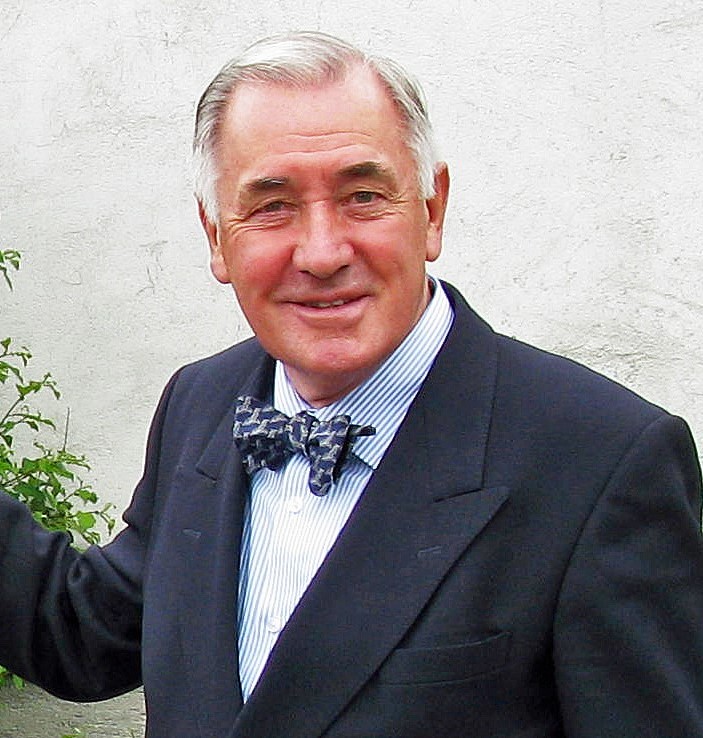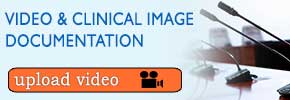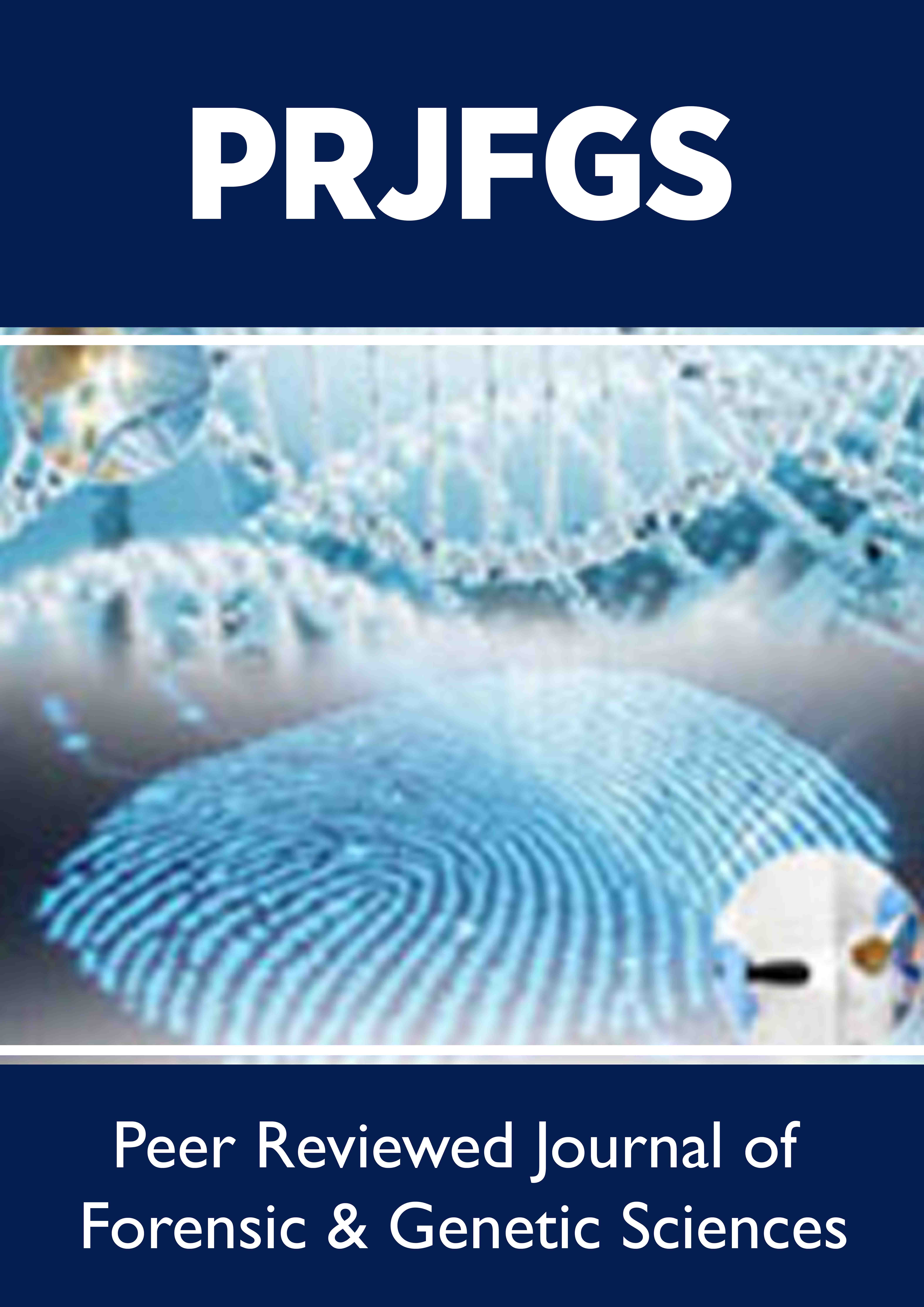
Lupine Publishers Group
Lupine Publishers
Menu
ISSN: 2638-6062
Review Article(ISSN: 2638-6062) 
How to Apply Virtual Autopsy in Egypt? Volume 4 - Issue 4
Said Said Elshama*
- Department of Forensic Medicine and Clinical Toxicology, Suez University, Egypt
Received: October 11, 2022; Published: October 17, 2022
*Corresponding author: Said Said Elshama, Department of Forensic Medicine and Clinical Toxicology, College of Medicine, Suez University, Suez City, Egypt
DOI: 10.32474/PRJFGS.2022.04.000195
Abstract
A virtual autopsy is an internal visual examination of the body using advanced technology such as magnetic resonance imaging, multi-sliced computed tomography, postmortem angiography, and surface scanning techniques. It may be used as a complementary technique to perform correct diagnosis wherein it can detect the findings that are not possible to discover and diagnose via standard autopsy only. Moreover, it can digitalize the findings through a combination of different tools of forensic imaging to solve criminal problems. In addition, the virtual autopsy can be applied widely in different fields of forensic medicine such as forensic pathology, forensic anthropology, forensic odontology, and forensic ballistic. Although the virtual autopsy has numerous benefits, there are many challenges and obstacles that face the application of virtual autopsy in Egypt such as legal, ethical, financial, scientific, and logistic aspects.
Keywords: Virtual autopsy; forensic imaging; postmortem angiography
Introduction
Forensic autopsy is an invasive destructive method wherein it depends mainly on the dissection of the body. So, it is usually unaccepted socially, culturally, and religiously in most countries in the world. Forensic autopsy is usually conducted to discover the manner and cause of death of the cadaver estimating the time of death and analyzing the different types of injuries with the identification of the unknown deceased [1]. However, forensic autopsy (traditional or conventional) is approved in the world as a trusted tool that can serve justice because advantages are greater than disadvantages [2]. Traditional autopsy is practiced in Egypt and most Arab countries under the umbrella of the ministry of justice interior, or health.
In Egypt, the forensic expert usually performs a complete autopsy and all aspects of death investigation with sampling for histopathological, serological, microbiological, chemical, or genetic examination including DNA fingerprinting using the available facilities of Egyptian forensic medical laboratories to prepare a final medicolegal report and send it to the general prosecuting authority [3]. Recently, some forensic experts found that the traditional autopsy is not sufficient to get all the needed information besides it is disfigurement and destructive tool. So, they start to search for advanced nondestructive and noninvasive technology that can provide additional information and replace the conventional autopsy such as imaging techniques.
Thus, there is a necessity in the modern era to employ virtual autopsy (virtopsy) to overcome many emerging scientific, legal, ethical, and religious objections to conventional and invasive autopsy [4]. Many countries in the world utilized virtual autopsy in the practice last few years. In Switzerland, it was born and become accepted as reliable and admissible evidence in several forensic cases. Moreover, many European forensic institutes in France, Denmark, and Sweden used virtual autopsy as an adjunct to traditional autopsy in all cases involving unknown or suspected death. In addition, Germany used it as a part of the external examination which proceeds traditional autopsy [5]. In the United Kingdom, it was performed in the most of suspicious deaths cases in tandem with an autopsy, but it was also used as an alternative to the classical autopsy in high-risk cases such as infectious cases.
On other hand, Italy used virtual autopsy as a triage, so the prosecutor can authorize pathologists to conduct a virtual autopsy to supplement the traditional autopsy. Furthermore, the virtual autopsy had already replaced the traditional autopsy in mass disaster cases that include more than ten victims. From another point of view, although Croatian regulations do not mention the possibility of the use of novel technology in performing the autopsy, the court has a chance to accept any method that can help forensic experts to reach the truth [6]. Therefore, the aim of this review is to present the available tools of virtual autopsy that may be used in Egypt with advantages and limitations of use for every tool. Moreover, this review will focus on many benefits that virtual autopsy can provide to serve justice besides showing legal and logistic restrictions that face the application of virtual autopsy in the Egyptian legal system.
Virtual Autopsy
There are many terms that have the same meaning of virtual autopsy such as forensic imaging, postmortem imaging, necroradiology, minimal invasive autopsy, and forensic radiology. Noteworthy, forensic imaging is the use of images to explain and document findings for medico-legal issues. Thus, the virtual autopsy is a visual internal examination of the body via using advanced technology such as magnetic resonance imaging, multisliced computed tomography, postmortem angiography, and surface scanning techniques. The target of the virtual autopsy is usually assessing injuries, the cause and manner of death, and identification like a conventional autopsy [7].
The application of virtual autopsy has numerous benefits. At the first, the virtual autopsy can overcome many ethical and religious considerations because it is a non-invasive technique. Secondly, a virtual autopsy can obtain standardized data that is not dependent upon the experience and methodology of the classical autopsy. Furthermore, virtual autopsy allows the possibility of cooperation between several experts in the field to be involved in the examination of an autopsy case. It also can reopen the case when the body is buried wherein it can be performed a long period after death whether months or years [8].
Therefore, a virtual autopsy may be a complementary technique to perform correct diagnosis wherein it can detect the findings that are impossible to discover and diagnose via standard autopsy only such as multiple small bleeding sources. It is a non-invasive or minimal invasive method that can digitalize the findings through a combination of different tools of forensic imaging to solve criminal problems. It is utilized to obtain high-quality three-dimensional images of the body without mutilation of the deceased. In addition, a virtual autopsy can be applied widely in different fields of forensic medicine such as forensic pathology, forensic anthropology, forensic odontology, and forensic ballistics [9].
Virtual Autopsy Tools
There are many types of virtual autopsy tools that may be used in practice such as Computed Tomography (CT), Postmortem Multi-Slice Computed Tomography (PMCT), Magnetic Resonance Imaging (MRI), 3D Surface Scanning, Augmented minimal invasive techniques through CT and MRI (Angiography and Biopsy), and Ultraviolet Forensic Imaging besides conventional X-ray [10]. Postmortem Multi-Slice Computed Tomography (PMCT) usually refers to MDCT (Multi-Detector Computed Tomography) that gives the best quality image in forensic imaging. It is the method of choice for assessing the skeletal system wherein it can visualize new and old fractures, small ones, and poorly accessible skeletal parts such as posterior parts of ribs, pelvis, and vertebrae. Moreover, It is an ideal method for detecting radio-opaque foreign bodies such as medical implants, projectiles, and foreign bodies) [11].
In addition, Postmortem Multi-Slice Computed Tomography (PMCT) can investigate traumatic death and hemorrhagic diseases such as cerebral hemorrhage, subarachnoid hemorrhage, aortic dissection, and aortic aneurismal rupture. Furthermore, it can detect gas and air embolism that can be difficult to find during traditional autopsy even the smallest amounts of gas as well as air embolism besides traumatic events such as blunt violence, traffic accidents, and gunshot. On another hand, Postmortem Multi-Slice Computed Tomography (PMCT) has limitations wherein it does not show patency of the vessel’s lumen or associated injury to the myocardium and then it cannot show stenoses or occlusions although its ability to show calcifications of coronary arteries [12]. In the related context, PMCT- Guided Sampling may be used for tissue or liquid sampling of any organ as well as it is used for microbiological analyses and toxicological screening of human fluids such as urine, bile, and other biological samples. It may also be used for the diagnosis of antemortem air embolism and decompression trauma in diving incidents via the determination of the exact composition of gas accumulations (Chemical analysis of gas via chromatography) [13].
Postmortem Angiography is a minimal invasive two-step technique wherein the first step is the bolus injection of an oil contrast agent into a human cadaver while the second step is radiographic imaging. It enables detailed examination of the vascular system that is difficult to be examined by the traditional autopsy method, so it can show the lumen of corpse vessels that are empty and collapsed. Moreover, it can localize the source of bleeding and stenoses or occlusions and detect vascular injuries due to stabbing or gunshots. In addition, it can differentiate the causes of hemopericardium that may be due to ruptured myocardial infarction or aortic dissection [14]. Magnetic Resonance Imaging (MRI) can discriminate muscles, fat, parenchyma, and neurological structures. So, it can detect soft tissue or organ injuries, infarcted or ischemic regions in the heart as well as fibrotic myocardial lesions enabling early diagnosis of cardiac arrest (post-mortem cardiac assessment). Thus, MRI is recommended for documenting the cause of death, especially in cases of sudden death and cardiac pathology. Moreover, MRI has special significance for the diagnosis of natural death, traumatic soft-tissue injuries, blunt force, stab wounds, medical errors, age estimation, and foreign bodies. Therefore, it can complement Postmortem Multi-Slice Computed Tomography (PMCT) which has limitations in organ findings discrimination [15].
Three-dimensional surface scanning is a quick and easy noninvasive method for 3D digitization of objects with high accuracy and resolution. It was mainly developed for the car industry and reconstruction of traffic accidents. Three-dimensional surface scanning can show a correlation between the lesion on the body and the suspected causative instrument and compare the bite marks with dental models of the supposed animal. Therefore, it can be combined with other imaging techniques such as PMCT and MRI allowing data storage for later use [16]. Ultraviolet Forensic Imaging (UV) can scan the body or crime scene for evidence such as wounds or bite marks that are not detectable by the naked eye and standard lighting techniques. There are two techniques for UV photography which are reflective and fluorescent UV imaging. Furthermore, it can show wounds in greater detail than would be possible with conventional photographic equipment besides the resulting images can be displayed on a video screen [17].
No doubt that every used tool in virtual autopsy has limitations as well as advantages, so a combination of two tools or more may assist the forensic expert to conclude more accurate results. Therefore, CT and MRI may be used in the examination of charred bodies, diagnosis of traumatic extra-axial hemorrhage, and postmortem weights of liver and spleen accurately wherein imaging is more accurate than autopsy for weighing livers, especially in congestion cases [18]. Moreover, synergy use of CT and MRI may also be used in the study of gunshot wound cases. However, MRI may be used in some cases because it is more sensitive than CT such as the detection of subarachnoid hemorrhage [19]. Finally, Conventional Radiography (X-Ray) is old and traditional postmortem investigation via direct exposure to X-ray. It evaluates the skeletal system in cases of trauma and detects the presence of a foreign body, so it is used in anthropology and Identification. Nowadays, conventional radiography is replaced with Multi- Detector Computed Tomography (MDCT) wherein allows 3D representation of any segment of the human body as well as better soft-tissue contrast [20].
Application of Virtual Autopsy in Egypt
There are many challenges and obstacles that face the application of virtual autopsy in Egypt. These obstacles are classified as legal, ethical, financial, scientific, and logistic issues. Firstly, there is no legal framework or legal basis that approves the usage of a virtual autopsy in criminal investigation [21]. Thus, Egyptian legal organizations should authorize virtual autopsy as a complementary or adjunct tool to conventional autopsy for a more accurate examination of the deceased and as a method for documenting the findings. So, implementation of the virtual autopsy should be conducted along with traditional autopsy as an obligatory procedure under the legal regulations not an option for a forensic expert. As a result, the virtual autopsy will become acceptable in front of the court [22]. Secondly, it should save financial resources because of the high cost of the virtual autopsy tools that require also regular maintenance. Furthermore, the Egyptian Forensic Medicine Authority has different branches that are distributed all over the country, so there is a need to establish a lot of radiological units besides the morgue in every governate [23].
Thirdly, it should train forensic experts and technicians through training courses via scientific cooperation with forensic and radiological departments in Egyptian universities to prepare qualified staff members who can apply virtual autopsy. In addition, it should update the curriculum of postgraduate forensic studies in Egyptian universities to include a program about forensic radiology (imaging) as a tool for forensic investigation [24]. Fourthly, protocols should be prepared showing how to use every tool of the virtual autopsy? And what are the indications of usage for every tool of the virtual autopsy? Fifthly, the establishment of a cooperation protocol between the Egyptian Forensic Medicine Authority and the ministry of health for the usage of different radiological units in general hospitals by forensic experts in different Egyptian governates. This is the first step toward overcoming the shortage of facilities and financial obstacles. Finally, there are some ethical issues that should be outlined via legal ethical regulations such as data privacy, personal rights, and methods of imaging material storage [25].
Conclusion
Virtual autopsy (postmortem imaging) is a non-invasive technique that uses images to explain and document findings for medico-legal issues. It can assess injuries, the cause and manner of death, and identification like a conventional autopsy. There are many types of virtual autopsy tools that may be used in practice such as Computed Tomography (CT), Postmortem Multi-Slice Computed Tomography (PMCT), Magnetic Resonance Imaging (MRI), 3D Surface Scanning, Augmented minimal invasive techniques through CT and MRI (Angiography and Biopsy), and Ultraviolet Forensic Imaging besides conventional X-ray. The application of virtual autopsy in Egypt still faces many challenges and obstacles that it should overcome in the future.
Declaration of Conflicting Interests
The author declares that there is no conflict of interest.
References
- Chevallier C, Doenz F, Vaucher P, Palmiere C, Dominguez A, et al. (2013) Postmortem computed tomography angiography vs conventional autopsy: advantages and inconveniences of each method. Int J Legal Med 127(5): 981-989.
- Payne-James J, McGovern C, Jones R, Karch S, Manlove J (2014) Simpson's Forensic Medicine: Irish Version. CRC Press, USA.
- Al-Waheeb S, Al-Kandary N, Aljerian K (2015) Forensic autopsy practice in the Middle East: Comparisons with the west. J Forensic Leg Med 32: 4-9.
- Blokker BM, Wagensveld IM, Weustink AC, Oosterhuis JW, Hunink MM (2016) Non-invasive or minimally invasive autopsy compared to conventional autopsy of suspected natural deaths in adults: a systematic review. Eur Radiol 26(4): 1159-1179.
- Arthurs OJ, Hutchinson JC, Sebire NJ (2017) Current issues in postmortem imaging of perinatal and forensic childhood deaths. Forensic Sci Med Pathol 13(1): 58-66.
- Van Kan R, Haest I, Lahaye M, Hofman P (2017) The diagnostic value of forensic imaging in fatal gunshot incidents: A review of literature. J Forensic Radiol Imag 10: 9-14.
- Bolliger SA, Thali MJ (2015) Imaging and virtual autopsy: looking back and forward. Philos Trans R Soc Lond B Biol Sci 370(1674): 20140253.
- Kružić I, Jerković I, Mihanović F, Marušić A, Anđelinović Š, et al. (2018) Virtual Autopsy in Legal Medicine: Literature Review and Example of Application on the Mummified Remains. Medicine, Law & Society 11(2): 67-90.
- Baier W, Warnett JM, Payne,M, Williams MA (2018) Introducing 3d printed models as demonstrative evidence at criminal trials. J Forensic Sci 63(4): 1298-1302.
- Zhang M (2022) Forensic imaging: a powerful tool in modern forensic investigation. Forensic Sci Res p. 1-8.
- Blum A, Kolopp M, Teixeira PG, Stroud T, Noirtin P, et al. (2018) Synergistic Role of Newer Techniques for Forensic and Postmortem CT Examinations. AJR Am J Roentgenol 211(1): 3-10.
- Grabherr S, Egger C, Vilarino R, Campana L, Jotterand M, et al. (2017) Modern post-mortem imaging: an update on recent developments. Forensic Sci Res 2(2): 52-64.
- Shiotani S, Shiigai M, Ueno Y, Sakamoto N, Atake S, et al. (2008) Postmortem computed tomography findings as evidence of traffic accident-related fatal injury. Radiat Med 26(5): 253-260.
- Grabherr S, Doenz F, Steger B, Dirnhofer R, Dominguez A, et al. (2011) Multi-phase post-mortem CT angiography: development of a standardized protocol. Int J Legal Med 125(6): 791-802.
- Thali MJ, Yen K, Schweitzer W, Vock P, Boesch C, et al. (2003) Virtopsy, a new imaging horizon in forensic pathology: virtual autopsy by postmortem multislice computed tomography (MSCT) and magnetic resonance imaging (MRI)- a feasibility study. J Forensic Sci 48(2): 386-403.
- Grabherr S, Baumann P, Minoiu C, Fahrni S, Mangin P (2016) Post-mortem imaging in forensic investigations: current utility, limitations, and ongoing developments. Res Rep Forensic Med Sci 6: 25-37.
- Schneider B, Chevallier C, Dominguez A, Bruguier C, Elandoy C, et al. (2012) The Forensic Radiographer: A New Member in the Medicolegal Team. Am J Forensic Med Pathol 33(1): 30-36.
- Roberts IS, Benamore RE, Benbow EW, Lee SH, Harris JN, et al. (2012) Post-mortem imaging as an alternative to autopsy in the diagnosis of adult deaths: a validation study. Lancet 379(9811): 136-142.
- Ross S, Ebner L, Flach P, Brodhage R, Bolliger SA, et al. (2012) Postmortem whole-body MRI in traumatic causes of death. AJR Am J Roentgenol 199(6): 1186-1192.
- Hajalioghli P, Tarzamni MK, Arami S, Fouladi DF, Ghojazadeh M (2015) The utility of ultrasonographic bone age determination in detecting growth disturbances; a comparative study with the conventional radiographic technique. Skeletal Radiol 44(9): 1351-1356.
- Baglivo M, Winklhofer S, Hatch GM, Ampanozi G, Thali MJ, et al. (2013) The rise of forensic and post-mortem radiology- analysis of the literature between the year 2000 and 2011. J Forensic Radiol Imag 1(1): 3-9.
- Bedford PJ, Oesterhelweg L (2013) Different conditions and strategies to utilize forensic radiology in the cities of Melbourne, Australia and Berlin, Germany. Forensic Sci Med Pathol 9(3): 321-326.
- O Donnell C, Woodford N (2008) Post-mortem radiology- a new subspeciality? Clin Radiol 63(11): 1189-1194.
- Rutty GN, Morgan B, O’Donnell C, Leth PM, Thali M (2008) Forensic institutes across the world place CT or MRI scanners or both into their mortuaries. J Trauma 65(2): 493-494.
- Blaauwgeers JL, van Rijn RR (2012) Virtual autopsy--why not? Ned Tijdschr Geneeskd 156(19): A4786.

Top Editors
-

Mark E Smith
Bio chemistry
University of Texas Medical Branch, USA -

Lawrence A Presley
Department of Criminal Justice
Liberty University, USA -

Thomas W Miller
Department of Psychiatry
University of Kentucky, USA -

Gjumrakch Aliev
Department of Medicine
Gally International Biomedical Research & Consulting LLC, USA -

Christopher Bryant
Department of Urbanisation and Agricultural
Montreal university, USA -

Robert William Frare
Oral & Maxillofacial Pathology
New York University, USA -

Rudolph Modesto Navari
Gastroenterology and Hepatology
University of Alabama, UK -

Andrew Hague
Department of Medicine
Universities of Bradford, UK -

George Gregory Buttigieg
Maltese College of Obstetrics and Gynaecology, Europe -

Chen-Hsiung Yeh
Oncology
Circulogene Theranostics, England -
.png)
Emilio Bucio-Carrillo
Radiation Chemistry
National University of Mexico, USA -
.jpg)
Casey J Grenier
Analytical Chemistry
Wentworth Institute of Technology, USA -
Hany Atalah
Minimally Invasive Surgery
Mercer University school of Medicine, USA -

Abu-Hussein Muhamad
Pediatric Dentistry
University of Athens , Greece

The annual scholar awards from Lupine Publishers honor a selected number Read More...




